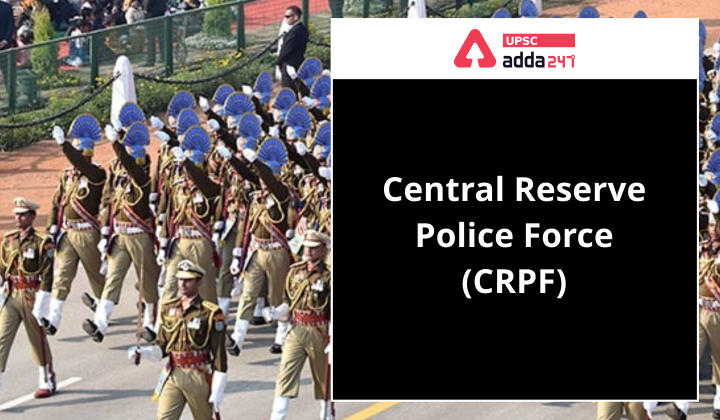Table of Contents
Central Reserve Police Force (CRPF)- Relevance for UPSC Exam
- GS Paper 3: Security- Various Security forces and agencies and their mandate.
Get free video for UPSC CSE preparation and make your dream of becoming an IAS/IPS/IRS a reality
Central Reserve Police Force (CRPF)- Context
- Recently, the Ministry of Home Affairs (MHA) issued orders to the CRPF headquarters to “include the provisions of Security Force Court (SFC) as available in the Acts and Rules of other CAPFs (Central Armed Police Forces).
- This is for initiating disciplinary action against the delinquent officers so that such cases are finalized within minimum time.”
Central Reserve Police Force (CRPF)- Need for Security Force Court (SFC)
- CRPF rules lay down the procedure for the conduct of departmental enquiries against non-gazetted ranks, and the officers are generally well versed with the procedure.
- As a result, most of the cases that are challenged in the High Courts are upheld.
- In normal circumstances, the departmental enquiries are completed within three to six months. But when gazetted officers are charge-sheeted, the time taken to order the enquiries is longer as other institutions like the Union Public Service Commission, the Central Vigilance Commission, the Department of Personnel and Training, and the MHA are also roped in for their views and legal opinion.
- This results in increasing cases being filed in the High Courts across the country in service matters.
Central Reserve Police Force (CRPF)- Setting up of Security Force Court (SFC)
- Rising pendency in the regular courts nudged the government for setting up tribunals for the CAPFs on the lines of the Armed Forces Tribunal for defence services.
- Retired officers of the rank of Inspectors General and Additional Directors General from the CAPFs could be part of these tribunals along with retired judges of High Courts.
- This would ensure speedy delivery of justice.
Special Economic Zones (SEZs) in India
Central Reserve Police Force (CRPF)- Key Points
- About: The Central Reserve Police Force came into existence as Crown Representative’s Police in 1939.
- It became the Central Reserve Police Force on the enactment of the CRPF Act on 28th December 1949.
- CRPF is the largest Central Armed Police Force in India.
- Parent Ministry: It functions under the Union Ministry of Home Affairs.
- Mandate: To enable the government to maintain Rule of Law, Public Order and Internal Security effectively and efficiently, to Preserve National Integrity and Promote Social Harmony and Development by upholding the supremacy of the Constitution.
Reciprocal Exchange of Logistics Agreement (RELOS)
Central Reserve Police Force (CRPF)- Key Duties
- Crowd/ Riot control
- Counter Militancy/Insurgency operations
- Dealing with Left Wing Extremism
- Protection of VIPs and vital installations
- Checking environmental degradation and protection of local Flora and Fauna
- Fighting aggression during Wartime
- Participating in UN Peacekeeping Mission
- Rescue and Relief operations at the time of Natural Calamities




 TSPSC Group 1 Question Paper 2024, Downl...
TSPSC Group 1 Question Paper 2024, Downl...
 TSPSC Group 1 Answer key 2024 Out, Downl...
TSPSC Group 1 Answer key 2024 Out, Downl...
 UPSC Prelims 2024 Question Paper, Downlo...
UPSC Prelims 2024 Question Paper, Downlo...




